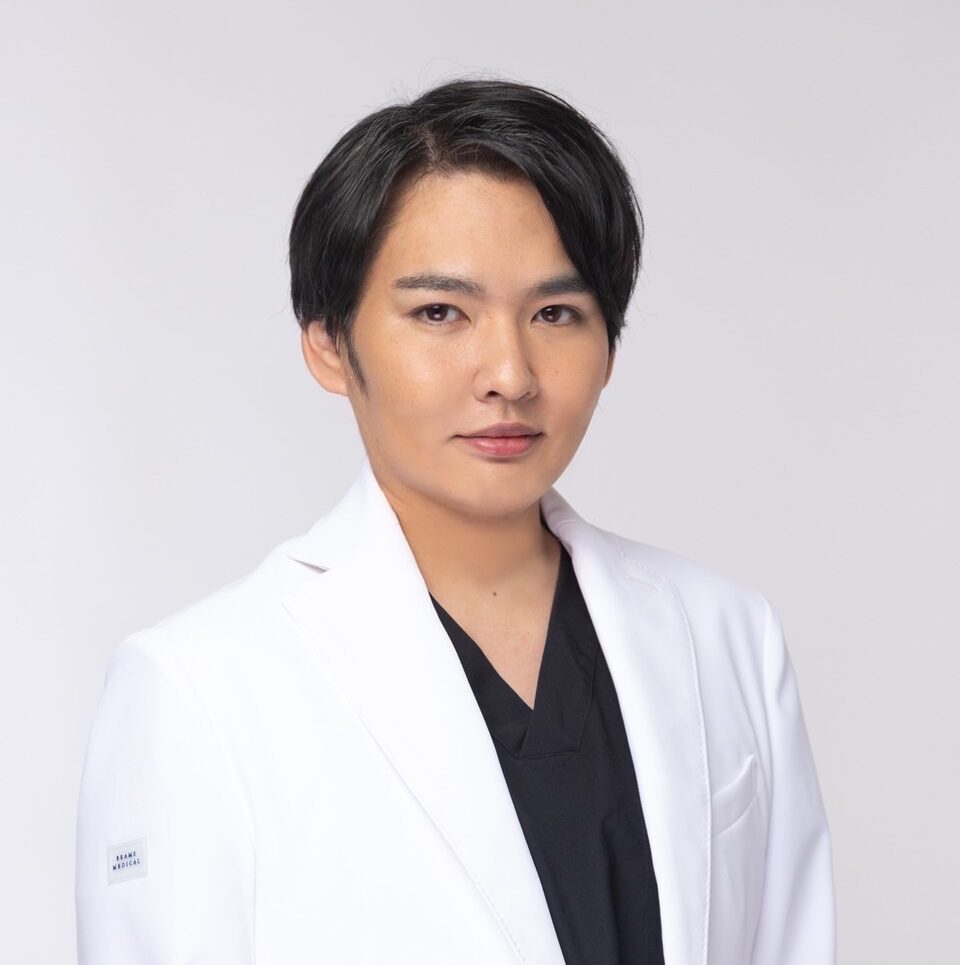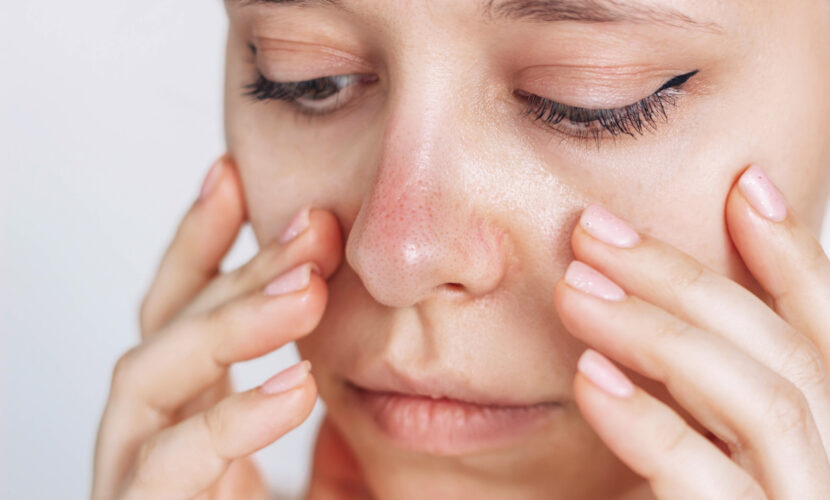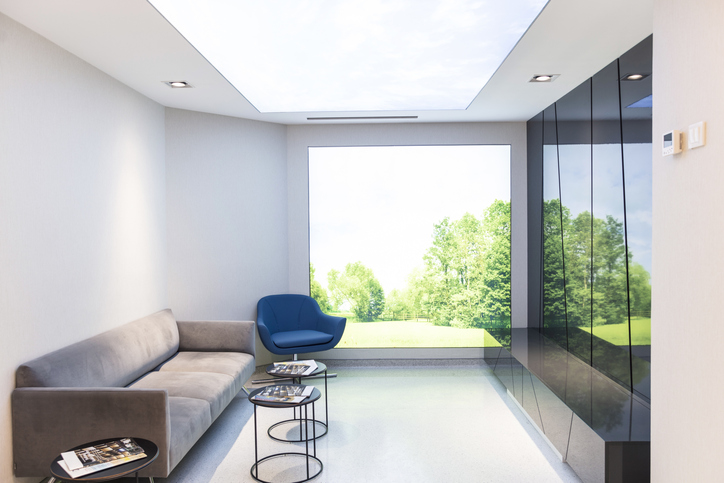A "strawberry nose" that will not go away no matter what you do. Many people suffer from blackheads that recur immediately after removing dead skin cells, and blackheads are always visible. social networking sites and beauty clinic reviews are talking about "dermapen works," but why is it expected to have a medical effect on pores and blackheads?
In this section, we will explain the root causes of strawberry nose from a scientific perspective, as well as the treatment principles, mechanism of action, and differences from other procedures of Dermapen, and even precautions to be taken during the procedure, from a professional perspective in an easy-to-understand manner. We will clarify the value of the "change from the skin texture" option based on regenerative medicine for those who have failed to improve their skin with esthetic treatments and over-the-counter skin care.

Graduated from the Faculty of Medicine, National Kumamoto University. After serving as the director of major beauty clinics in Japan, etc., he opened Aladdin Aesthetic Clinic in 2023. He is a professional in aesthetic medicine with a doctorate in anti-aging research and many years of experience. With the motto of "Toward the realization of cosmetic medicine without lies," he aims to be the "Only One" together with his patients.
- What is a strawberry nose? Understanding the Causes Correctly
- What is a Dermapen? Cosmetic medicine that draws out the skin's regenerative power
- How does a dermapen work for strawberry nose? Expert Mechanism Explained
- How many millimeters for a dermapen treatment? How many times? What about pain and downtime?
- Dermapen vs. other procedures for the treatment of strawberry nose! What is the difference from peelings and lasers?
- Why you should get a dermapen at a medical facility and the risks of self-treatment
- summary
What is a strawberry nose? Understanding the Causes Correctly
Strawberry nose is a general term for pore problems that are a complex combination of blackheads, keratin plugs, and open pores. At first glance, it tends to be considered simply "blackheads in pores," but in reality, multifaceted factors such as skin structure, sebum secretion, and abnormal keratinization are involved.
This symptom, which greatly affects the appearance of the skin, is difficult to remedy with superficial care alone and often worsens repeatedly.
Here we provide a professional explanation of the structural causes of strawberry nose and why common care is not the root cause of the problem.
Strawberry nose = combination of blackheads, keratin plugs, and open pores
Strawberry nose is a common name for a condition in which the pores of the nose are black and pockmarked. Medically, it corresponds to "porous black comedones" or "hyperkeratotic pore size. This condition is caused by a combination of the following three factors
| Main Elements | Description. |
|---|---|
| Excessive secretion of sebum | The nose has more sebaceous glands than any other part of the face and is prone to excessive sebum production. |
| Clogged keratin plugs | Secreted sebum and dead skin cells mix and accumulate inside pores as keratin plugs. |
| Pore opening | Chronic clogging and sebum secretion push the pores apart and make them more visible. |
The root cause lies "deep within the pores" that cannot be reached by surface care.
Blackheads are caused by oxidized sebum (especially the component contained in keratin plugs) that turns black when exposed to air. This phenomenon occurs not at the "opening" of the pore, but "inside" the pore, and even if superficial treatments such as scrubs and pore packs can temporarily remove it, it will soon re-form.
In addition, when the metabolic rhythms of sebum and keratin are disrupted, keratinization can easily become excessive, resulting in an increased risk of a recurrent cycle of keratin plugs. In other words, without addressing the underlying skin quality and pore structure, strawberry nose will appear repeatedly.
Why do so many people fall into the care gypsy?
Many people become "care gypsies," switching from one product to another after using commercial facial cleansers and pore care products with no improvement. The reason for this is that many products only look at the "surface" of pores and fail to address their "structure and function.
In addition, excessive cleaning and strong stimulation (scrubs and pore packs are frequently used) can have the opposite effect of breaking down the skin's barrier function and promoting sebum secretion. Since open pores and keratin plugs are a "chronic condition" resulting from a breakdown of skin homeostasis, it is necessary to work on the skin's metabolism, turnover, and sebum balance itself, rather than on short-term external approaches.
What is a Dermapen? Cosmetic medicine that draws out the skin's regenerative power
As explained in the previous chapter, strawberry nose is a complex skin condition caused by a combination of sebum, keratin plugs, and reduced pore elasticity, and it is difficult to fundamentally improve it with superficial care. So, what methods are available to work on the "inside" of pores? One answer is the Dermapen.
Dermapen is one of the cosmetic medical technologies that have been attracting attention in recent years. It is a regenerative medical treatment that utilizes the skin's natural healing power and rebuilds skin quality from the dermal layer. Here, we will explain in detail from a scientific perspective the basic principles of the Dermapen, its medical positioning, and why it is effective for treating strawberry nose and pore problems.
A type of regenerative medicine using microdamage
A dermapen is an electric device with an ultra-fine needle at its tip that makes microscopic holes uniformly on the surface of the skin. This microscopic damage to the skin causes a "light wound" that draws out the self-repair function - in other words, it is a medical procedure that activates the natural regenerative power of the human body.
When skin is damaged, the wound healing response activates fibroblasts, which promote the production of collagen and elastin. This increases the elasticity of the dermis layer that supports pores, leading to improvement of pore size and sebum clogging.
In addition, the Dermapen is characterized by its ability to achieve a fundamental improvement in skin quality, as it prevents the formation of keratin plugs and smoothes out the discharge of sebum by adjusting the structure of the pores.
Why is the Dermapen applied to strawberry nose?
In the treatment of a strawberry nose, the key is how to approach the "deep pores". While conventional skin care, packs, and scrubs act only on the stratum corneum (epidermis), Dermapen reaches the dermis layer and promotes skin regeneration at the structural level.
| Comparison items | Skin Care Packs | dermapen |
|---|---|---|
| site of action | Epidermal layer (about 0.02-0.05 mm) | Epidermis to dermis layer (variable up to 2.5 mm) |
| Objective. | Temporary surface contamination removal | Restructuring of skin structure and turnover promotion |
| Depth of approach | Shallow (mainly exfoliation) | Deep (stimulates collagen production) |
| Durability of effects | temporary | Medium- to long-term improvement of skin quality |
Thus, it can be seen that the Dermapen is not just a cosmetic device, but a "medical skin regeneration treatment," a means of fundamentally improving pores based on dermatological science.
Theory of "microdamage" as part of regenerative medicine
Medically, the Dermapen procedure is based on the concept of micro-damage. This is a technique that dares to activate the skin's regenerative mechanisms by applying slight external stimuli to improve skin texture.
From the viewpoint of "regeneration promotion," in recent years, Dermapen has been combined with PRP (Plasma Reconstituted Platelet) therapy and growth factors, and is used not only for the purpose of skin beautification, but also for the treatment of scars, acne scars, and enlarged pores. In other words, Dermapen is positioned as a treatment method with regenerative medical value that goes beyond "beauty".
- Epidermal layer: shallow layer that scrubbing and washing can reach
- Dermis layer: the layer where the dermapen needle reaches and activates collagen production
- Peripheral sebaceous glands: concentration of cells that maintain pore elasticity
It is essential to control the correct needle depth, appropriate power, and irradiation speed for dermapen. It is considered a medical procedure that should be performed safely under the supervision of a physician or medical professional, as overstimulation conversely carries the risk of hyperpigmentation and scarring.
How does a dermapen work for strawberry nose? Expert Mechanism Explained
In the previous chapter, we explained that the Dermapen is a medical regenerative treatment that activates collagen production and turnover by causing "intentional micro-damage" to the skin with a fine needle. So, how does the Dermapen work on "strawberry nose" and why has it been so effective for so many patients?
Here, we will explain the structure of pores and the mechanism of clogging, and show how Dermapen is a medical method that does not remove keratin plugs but leads the skin to a state where pores are less likely to become clogged. The dermapen is a medical method that "leads to unclogged pores," rather than "removing the plugs themselves.
Pore structure extending from epidermis to dermis layer and starting point of clogging
Blackheads and roughness of pores, the main cause of strawberry nose, are not caused by "epidermal dirt" alone. Medically, it is believed that chronic pore problems are formed by the intertwining of the following three factors.
The following pore problems often occur deep within the skin structure, not on the "skin surface".
(1) Excessive sebum secretion
The area around the nose has a high concentration of sebaceous glands, which are constantly secreting sebum. When this sebum mixes with keratin, it becomes a source of keratin plugs.
(2) Abnormal keratinization (disturbed turnover)
Old keratin is not expelled properly and accumulates inside the pore, hardening and forming keratin plugs.
(iii) Decreased elasticity around pores
When the dermis around the pore outlet is weakened, the pore is pushed open and easily clogged.
Dermapen works by "preventing" the formation of keratopenic plugs, rather than "removing" them.
The effect of the Dermapen can be summarized in one word: to create a skin condition that does not repeatedly clog pores. The main actions expected from the treatment are as follows
1) Inhibition of keratinization
Normalized turnover prevents excessive keratin buildup and prevents the formation of keratin plugs.
(2) Dermal reconstruction
Collagen and elastin production is stimulated, the tissue around pores is tightened, and pore shape is improved.
(iii) Sebum balance adjustment
Stimulation of sebaceous glands is gradually suppressed, and excessive sebum secretion gradually calms down.
The essential difference between this approach and skincare is that it is a medical approach that does not directly "remove blackheads" but rather fundamentally restructures the skin itself.
Combined improvement effect on blackheads, roughness, and enlarged pores
Many cases have been reported in which dermapen treatment has resulted in gradual changes to the following pore problems
- Blackheads: reduced reformation of oxidized keratin plugs and less visible pores
- Roughness: Smooth skin texture by regulating keratin metabolism
- Pore opening: elasticity of the dermis is restored and pore diameter is gradually tightened.
These are all secondary effects that can be obtained as the "skin quality" itself approaches normalcy. In other words, it is not a short-term strategy to "remove dead skin cells," but a long-term strategy to achieve "skin that does not allow dead skin cells to form.
How many millimeters for a dermapen treatment? How many times? What about pain and downtime?
In the previous chapter, we told you that Dermapen is a treatment that "changes the skin texture itself" for the root improvement of strawberry nose. However, when it comes to the actual treatment, you may be asking yourself, "How deep do you insert the needles? How many times do I have to go through the procedure? Is the downtime painful? How many times do I have to go through the procedure?
Here we will explain in detail the practical treatment conditions, such as needle length, number of treatments, and downtime, based on on-site standards at medical institutions. By knowing this information before the procedure, you will have the knowledge to go into treatment with more peace of mind.
Needle lengths used and differences by purpose
One of the most important decision points in a dermapen procedure is the depth (length) of the needle. This should be adjusted appropriately according to the type of skin problem, the area, and the skin condition, and is always set based on the physician's diagnosis and judgment.
While the nose has many sebaceous glands and dense pores, it is also an area that requires delicate depth control due to its proximity to the bone and its unevenness. For the purpose of strawberry nose, the length of the needle used is usually 0.25mm to 1.0mm. It may be shallower in individuals with thinner skin and slightly deeper in those with more pronounced pores.
Number of times/frequency|Continuation of 3 or more times is the key.
In pore problems such as strawberry nose, it is rare for a single treatment to produce dramatic changes. Multiple, ongoing treatments are necessary because it takes time to rebuild the skin texture.
The general recommendation is for a course of three to five sessions, with most cases performed once every two to four weeks. This interval takes into account the cycle of collagen production as the skin recovers from damage.
Although there are individual differences, it is said that in many cases, tightening of pores and improvement of roughness can be felt after the second or third session.
Actual downtime and pain
Dermapen is a medical procedure and involves a certain amount of downtime. However, when performed with the correct technique, downtime is usually relatively minor and short-lived.
The main reactions are as follows
- Redness and burning: immediately after the procedure, for a few hours to a day. Most will diminish the next day.
- Mild swelling and tingling: improves spontaneously in 1-3 days, especially around the nose.
- Thin scabs or peeling: depends on the individual and often settles down in 2-5 days.
In the majority of cases, anesthetic cream is used prior to the procedure, so the pain is barely felt. However, if the skin is sensitive or a deeper needle is used, some pain may occur.
Dermapen vs. other procedures for the treatment of strawberry nose! What is the difference from peelings and lasers?
Once you have a better understanding of the Dermapen procedure and its specific effects, you may be wondering, "How is it different from other treatments?" The next question is, "What are the differences from other treatments? Chemical peels and laser treatments are also widely available for the treatment of strawberry noses and open pores, and many people wonder which one they should choose.
| (data) item | dermapen | peeling | laser therapy |
|---|---|---|---|
| working principle | Physical stimulation with fine needles + natural healing | Chemical exfoliation of the epidermis with drugs | Skin reconstruction with thermal energy |
| site of action | Epidermis to dermis layer (needle depth adjustable) | Stratum corneum of the epidermis | Epidermis to dermis layer (varies depending on depth of irradiation) |
| range of application | Pores, acne scars, skin texture improvement, fine wrinkles, etc. | Dullness, roughness, light pores | Pores, pigmentation, acne scars, tightening |
| down time | Mild (redness and peeling for 1-3 days) | almost none | Moderate to strong (with risk of scabbing and pigmentation) |
| Cost Perception (approximate) | 10,000-20,000 yen/time (up or down depending on the induction agent) | 5,000-10,000 yen/trip | 20,000~30,000 yen/times (varies by model) |
| Effect of reducing the risk of recurrence | High (change from skin type) | Low (surface treatment center) | Medium to high (depends on frequency and irradiation setting) |
In this section, we will compare the principles of each treatment, its range of effectiveness, the risk of side effects, and the fundamental differences from the Dermapen from a medical perspective. In order to choose the right treatment for your skin condition, it is important to first understand the "essence of the approach.
Difference from Peeling|Exfoliation or Regeneration? Regeneration?
Chemical peels are treatments that chemically remove dead skin cells on the surface of the skin using agents such as salicylic acid and glycolic acid. It promotes turnover and is effective in treating dullness, roughness, and mild pore-clogging.
On the other hand, the main purpose of peeling is to "exfoliate" the epidermis, and it is not a treatment that fundamentally changes the structure of the skin. Although pores may appear to be temporarily cleaned, the effect on the dermis layer is limited.
In contrast, the Dermapen is a "regenerative" approach that uses fine needle stimulation to draw out the skin's "regenerative power" and rebuild the pore's foundation structure. This difference greatly affects the durability and extent of improvement.
Difference from Laser|Thermal Stimulation or Physical Stimulation? Physical Stimulation?
Laser treatment is a procedure that uses light energy of specific wavelengths to stimulate turnover while providing thermal stimulation. Typical examples include fractional CO2 lasers and picofractional lasers, which are also used to tighten pores and improve acne scars.
However, laser treatment tends to cause more downtime, such as redness and scabbing, as it aims to rebuild the skin through "thermal damage. In addition, the risk tends to fluctuate depending on the skin's tolerance to heat, so careful irradiation settings are required.
In contrast, the Dermapen is a "physical stimulation + growth factor introduction" approach that is relatively gentle on the skin. Since collagen is naturally increased through microscopic wounds, it has the advantage of less downtime and less risk of hyperpigmentation compared to laser.
Possibility of Combination Therapy and Importance of Physician's Judgment of Indication
The important thing is not to think that any one method is absolutely superior to the other, but rather to choose the "most appropriate method" for your skin type and concerns.
In actual practice, in addition to treatment with dermapen alone, there are many cases in which the treatment is combined with peeling or laser to achieve a synergistic effect. For example,
- Dermapen + peeling: Combination of exfoliation and deep regeneration for both roughness and pores
- Dermapen + laser: Multifaceted skin restructuring and collective improvement of pores, pigmentation, and texture
and so on, optimized according to the purpose and course of treatment.
In order to develop such a treatment strategy, it is essential to have a physician who has both skin diagnostic skills and treatment techniques. The first step to achieving satisfactory results is to confirm during the counseling session whether there are options for combined treatments as well as single treatments, and whether adaptive decisions have been made that are appropriate for your skin.
Why you should get a dermapen at a medical facility and the risks of self-treatment
In the previous chapters, we have explained that dermapen is very effective for treating strawberry nose and pore problems, and that this treatment is expected to improve skin texture from a deeper level compared to other treatments. Recently, however, more and more people are trying "self dermapen" through social networking sites and video sites.
Here is a clear introduction to why medical procedures are recommended in terms of risk management and reliability in cosmetic medicine, and what are the risks of self-treatment.
In order to obtain maximum results while protecting the health of the skin, not only the treatment itself, but also "where and by whom" the treatment is performed is extremely important.
Dangers of Self-Dermapen! The Pitfalls of Invisible Risks
Although the self-dermapen appears easy at first glance, there are serious risks involved in performing this near-medical procedure on oneself. In particular, the following points should be noted.
(1) Risk of bacterial infection
If the environment in which they are used is unsanitary, bacteria may invade through pores or microscopic wounds, causing inflammation, suppuration, or cellulitis.
(2) Risk of scar formation and pigmentation
If the procedure is performed without understanding the proper needle depth and pressure, epidermal breakdown and dermal damage may result, which in turn may worsen pores and skin texture.
(iii) Difficult to deal with in case of skin problems
When redness, swelling, or allergic reactions occur, there is a risk of delayed response and prolonged symptoms in an environment without professional aftercare.
Dermapen, in particular, is considered extremely dangerous to be performed by individuals without a physician's supervision, as the procedure requires a comprehensive assessment of the needle length and speed, the ingredients of the induction agent, and the thickness of the skin.
The "safety and effectiveness" of dermapens received at medical institutions
On the other hand, a dermapen procedure at a medical institution offers the following advantages
(1) Skin diagnosis and treatment plan design by a physician
The doctor will carefully evaluate the pore type (blackheads, openings, roughness, etc.) and skin type (sensitive skin, oily skin, etc.) to select the optimal needle depth and introduction agent.
(2) Thorough hygiene management
The risk of infection is minimized because no instruments are used and the entire procedure is performed in a sterile controlled environment.
(iii) Postoperative follow-up and handling of side effects
The company is able to respond quickly to any problems that may arise, such as downtime lapse or allergic reactions, allowing patients to undergo treatment with peace of mind.
Dermapen is classified as a medical device and is a treatment that should be performed by a qualified medical practitioner. Medical treatment backed by professional knowledge and experience is essential for both safety and effectiveness. In addition, "quality of counseling" and "aftercare system" greatly affect the level of satisfaction with Dermapen treatment. Reliable clinics have the following systems in place.
- Proper diagnosis of skin texture and pore condition
- Propose a treatment plan that meets your treatment objectives
- Careful explanation of downtime and side effects
- Guidance on aftercare, including postoperative moisturizing and UV care
- Support system in case of trouble
Only a medical institution can consistently handle all of these issues. It is precisely for pore problems that have plagued us for many years that it is desirable to safely remedy them under professional medical care, rather than by self-induced procedures.
summary
Strawberry nose is not only a superficial problem such as blackheads and keratin plugs in the pores, but also a complex problem caused by excessive sebum secretion and the pore structure itself.
Dermapen is a treatment that activates the dermal layer of the skin by applying microscopic stimulation to the skin, promoting collagen production and fundamentally regulating pore elasticity and turnover. It can reach deeper than skin care can reach, and can be a medically effective option for those who have suffered from this problem for many years.
However, to maximize safety and effectiveness, it is essential to undergo the procedure at a medical institution under the diagnosis and supervision of a specialist, rather than self-surgery. Together with a trusted physician, take the first step toward fundamental improvement from the skin's texture.
At Aladdin Aesthetic Clinic, based on our many years of experience in cosmetic medicine and cosmetic dermatology and the knowledge of our doctoral degree, we provide counseling that aims to be "only one", offering the best treatment for each person we meet. We offer only the necessary treatments without any unnecessary information or suggestions.
Feel free to use our official LINE account for 24-hour counseling and reservations. Please feel free to contact us for free counseling for the first time or if you have any concerns.






